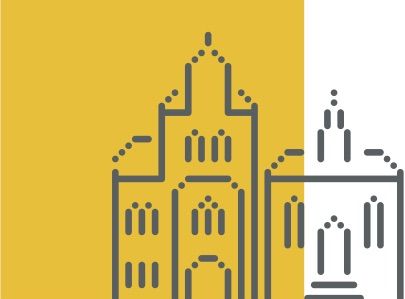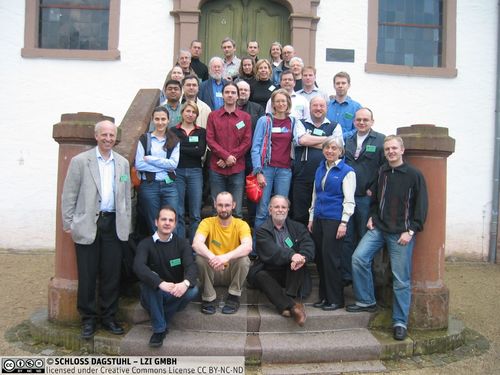Dagstuhl Seminar 07132
Towards Interoperability of Biomedical Ontologies
( Mar 27 – Mar 30, 2007 )
Permalink
Organizers
- Mark A. Musen (Stanford University, US)
- Michael Schroeder (TU Dresden, DE)
- Barry Smith (SUNY - Buffalo, US)
Contact
Press/News
Press Release
"Wissenschaftler ordnen biomedizinische Datenbanken" 13.03.07(German only)
The meeting focused on uses of ontologies, with a special focus on spatial ontologies, in addressing the ever increasing needs faced by biology and medicine to cope with ever expanding quantities of data. To provide effective solutions computers need to integrate data deriving from myriad heterogeneous sources by bringing the data together within a single framework. The meeting brought together leaders in the field of what are called ‘top-level ontologies’ to address this issue, and to establish strategies among leaders in the field of biomedical ontology for the creation of interoperable biomedical ontologies which will serve the goal of useful data integration.
One result of the meeting was to bring together representatives of different communities involved, especially the OWL/Semantic Web community, the qualitative spatial reasoning community, and the OBO Foundry and model organism database communities who have been associated with the Gene Ontology. The latter is, after 10 years, the most successful biomedical ontology when measured in terms of users, of associated tools, and of literature citations. Another result of the meeting was that, by contributing to the breaking down of barriers between these various communities, it gave significant impetus to the development and acceptance of new software tools which allow conversion of the OBO and OWL ontology formats. All OBO ontology content, including several hundreds of thousands of Gene Ontology Annotations, are now, as a result of this work, available on the Semantic Web in OWL format. The resulting potential for new kinds of exploitation of this data was outlined at the meeting by Alan Ruttenberg on behalf of the Semantic Web Health Care and Life Sciences Interest Group, who described new ways of integrating bio-ontology data, spatial data (for example pertaining to brain regions) with clinical data in neurology. Abstracts of talks presented at the meeting are appended below. They give some idea of the scope of the work presented.
- Michael Ashburner (University of Cambridge, GB)
- Elena Beisswanger (Universität Jena, DE)
- Brandon Bennett (University of Leeds, GB) [dblp]
- Thomas Bittner (SUNY - Buffalo, US) [dblp]
- Judith A. Blake (The Jackson Laboratory - Bar Harbor, US)
- Albert Burger (Heriot-Watt University Edinburgh, GB)
- Anthony Cohn (University of Leeds, GB) [dblp]
- Lindsay G. Cowell (Duke University - Durham, US)
- Karen Eilbeck (Lawrence National Lab. - Berkeley, US)
- Esra Erdem (Sabanci University - Istanbul, TR) [dblp]
- Carole Goble (University of Manchester, GB) [dblp]
- Robert Hoehndorf (Universität Leipzig, DE)
- Ian Horrocks (University of Manchester, GB) [dblp]
- Ingvar Johansson (Universität des Saarlandes, DE)
- Janet Kelso (MPI for Evolutionary Anthropology, DE)
- Patty Kostkova (City University London, GB)
- Waclaw Kusnierczyk (NTNU - Trondheim, NO)
- Patrick Lambrix (Linköping University, SE)
- Holger Lewen (KIT - Karlsruher Institut für Technologie, DE)
- Suzanna Lewis (Lawrence National Lab. - Berkeley, US)
- Yves Lussier (University of Chicago, US)
- Chris Mungall (Lawrence Berkeley National Laboratory, US)
- Fabian Neuhaus (SUNY - Buffalo, US)
- Dietrich Rebholz-Schuhmann (European Bioinformatics Institute - Cambridge, GB)
- Alan L. Rector (University of Manchester, GB)
- Philippe Rocca-Serra (European Bioinformatics Institute - Cambridge, GB)
- Alan Ruttenberg (Science Commons - Cambridge, US)
- Susanna-Assunta Sansone (European Bioinformatics Institute - Cambridge, GB) [dblp]
- Michael Schroeder (TU Dresden, DE)
- Stefan Schulz (Uniklinikum Freiburg, DE)
- Nigam Shah (Stanford University, US)
- Barry Smith (SUNY - Buffalo, US)
- Holger Stenzhorn (Universität des Saarlandes, DE) [dblp]
- Robert Stevens (University of Manchester, GB) [dblp]
Classification
- semantics / formal methods
- interdisciplinary: bioinformatics
- medical informatics
Keywords
- formal ontology
- biomedical ontology
- standardization
- data integration
- information retrieval
- reasoning with information at different levels of granularity


